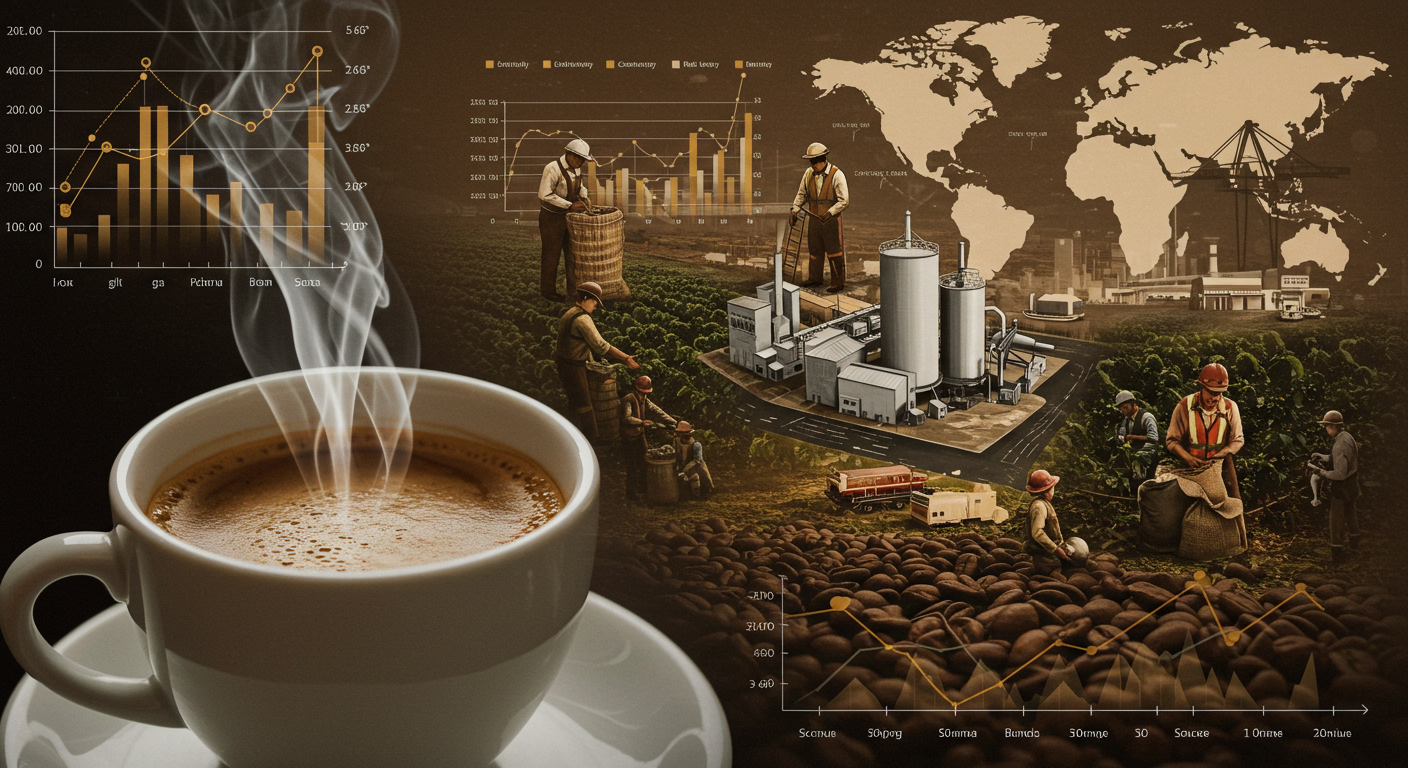When you sip your morning coffee, you probably don’t think about international trade, farmer cooperatives, or export regulations. But coffee is more than a beloved beverage — it’s one of the most valuable commodities in the world, impacting millions of lives and economies across the globe.
In this article, we’ll explore how coffee fuels local and global economies, who benefits from its trade, and how consumers can play a part in supporting a more equitable industry.
Coffee: A Global Powerhouse Commodity
Coffee is the second-most traded commodity globally, behind oil. The global coffee market is worth over $100 billion per year, with consumption continuing to rise.
Major Facts:
- Over 2.25 billion cups of coffee are consumed every day.
- The coffee industry employs more than 125 million people worldwide.
- Coffee is grown in more than 70 countries, primarily in the Global South.
Key Players in the Coffee Economy
1. Producing Countries
The “Coffee Belt” runs through Central and South America, Africa, and Southeast Asia.
Top producers include:
- Brazil (largest producer)
- Vietnam
- Colombia
- Ethiopia
- Honduras
These economies rely heavily on coffee exports, especially in rural areas.
2. Exporters and Importers
Raw coffee beans (green coffee) are exported to major coffee-consuming countries such as:
- United States
- Germany
- Italy
- Japan
- France
These countries roast, package, and sell the beans — adding significant value.
3. Roasters and Retailers
Companies like Nestlé, Starbucks, JDE Peet’s, and Lavazza dominate the roasting and branding sector, generating billions in revenue from beans grown in developing nations.
4. Consumers
You play a key role by choosing which brands to support and how often you consume coffee.
Coffee’s Economic Impact on Farmers
While the global coffee industry is worth billions, most coffee farmers live in poverty.
Why?
- Farmers earn a tiny fraction of the retail price — often just 5%–10%.
- Price volatility in international markets can cause financial instability.
- Climate change and pests affect yield and income.
- Many small farms lack access to credit, infrastructure, or technology.
A Case Study:
A $3 cup of coffee might be broken down like this:
- Retailer: $1.50
- Roaster: $0.80
- Exporter/Importer: $0.30
- Farmer: $0.15–$0.25
How Coffee Prices Are Determined
Coffee prices are set on global commodity exchanges (like the ICE Futures Exchange) and are heavily influenced by:
- Weather patterns (droughts, frosts, hurricanes)
- Geopolitical events
- Demand forecasts
- Speculation by investors
This makes coffee prices highly volatile, often to the detriment of small farmers.
Initiatives for a Fairer Coffee Economy
1. Fair Trade Certification
Guarantees a minimum price to protect farmers from market crashes and ensures ethical labor practices.
2. Direct Trade
Some roasters buy directly from farmers or cooperatives, eliminating middlemen and increasing income for producers.
3. Farmer Cooperatives
By forming cooperatives, small farmers can:
- Pool resources
- Improve bargaining power
- Access better tools and training
4. Government Subsidies and NGO Support
In countries like Colombia and Ethiopia, government bodies and nonprofits work to:
- Stabilize prices
- Offer insurance and loans
- Provide market access
Coffee in Local Economies
In producing countries, coffee can contribute up to 50% of agricultural GDP. It also supports:
- Local transportation networks
- Equipment manufacturing
- Packaging and logistics industries
- Education and healthcare through export taxes
In consuming countries, it powers cafés, restaurants, roasteries, tech platforms (like delivery apps), and global franchises.
The Rise of Specialty Coffee
Specialty coffee has changed the economics of the industry by:
- Paying premium prices for quality and traceability
- Encouraging sustainable and innovative farming practices
- Educating consumers about origin and processing
This growing segment supports more ethical and transparent trade relationships.
How Consumers Can Help
You might not run a coffee company — but your choices matter.
✅ Buy Certified Coffee
Look for:
- Fair Trade
- Rainforest Alliance
- Direct Trade partnerships
✅ Support Local Roasters with Ethical Practices
They often have closer relationships with farms and prioritize transparency.
✅ Ask Questions
Where is your coffee from? How are the farmers paid? Is it traceable?
✅ Value Quality Over Quantity
Instead of buying the cheapest brand, support companies that give back to producers.
One Cup, One Economy
Coffee doesn’t just wake you up — it wakes up economies around the world.
From a farmer in Honduras to a barista in Berlin, coffee connects people across continents. By understanding and appreciating the economics behind every cup, we can support a coffee system that’s not only profitable — but fair and sustainable.


